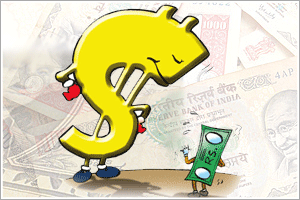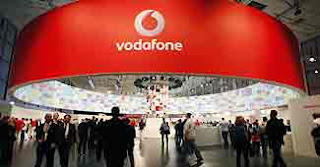Narayana Murthy's success in turning around Indian IT services firm Infosys hinges on his ability to revive its sales efforts and shake up the conservative culture he helped create.
Eleven years after Murthy stepped down as chief executive at India's second largest computer services exporter, Infosys unexpectedly brought back the 66-year-old as executive chairman to reverse falling market share and end two years of disappointing results.
Shares rose as much as 9 percent to almost a two-month high following the weekend announcement, outperforming the broader market. But Murthy, a founding father of India's USD 108 billion IT outsourcing sector who was the longest serving Infosys CEO, returns to an industry buffeted by change.
Customers and rivals are pushing prices down, costs are rising as technologies become obsolete faster than ever, and the sector's biggest market, the United States, is considering visa rules that will make it more costly and difficult to send workers there.
Some industry experts say Infosys's inflexibility on prices and margins and a tradition of rotating leadership roles amongst its founders have made it less nimble than rivals like Tata Consultancy Services Ltd and HCL Technologies Ltd .
Infosys has also been losing market share over the last two years. From the year ended March 2011 to the year ended March 2013, Tata Consultancy's share of the overall revenues of the Indian IT sector grew to 10.7 percent from 9.3 percent while Infosys's share remained unchanged at 6.9 percent, according to Reuters calculations.
"They were not an easy company to work with from a contracting and pricing perspective," said Sudin Apte, CEO of outsourcing advisory Offshore Insights in Pune.
"Changing one person automatically doesn't solve these issues, so really one has to see over the next two to three quarters."
Murthy was CEO for 19 years and, as the company's second largest shareholder, has the clout to force change. He is known in the industry as a charismatic leader, which may help retain staff at a time when employee turnover is at its highest in two years.
But his return has revived investor concerns that Infosys is overly reliant on its founders for leadership, a management culture criticised as conservative. All four of its CEOs were members of the group that set up the company 32 years ago and external hires rarely occupy senior positions.
"Infosys has got a reputation for internal arrogance and you see that in the customer base, you see that in the industry," said Peter Bendor-Samuel, CEO of the Everest Group, a consultancy in Dallas, Texas.
"They're going to have to address that and to do that they're going to have to bring talent from the outside. If Murthy choses to do that, he's uniquely positioned."
To bring Murthy back, the board raised the mandatory retirement age and allowed him to bring his 29-year-old son, a Harvard fellow with a PhD in computer science, as executive assistant.
Murthy magic?
Once the Indian IT sector trend-setter, Infosys has turned in a string of disappointing results.
Its annual forecast for revenue growth of 6-10 percent lags the 12-14 percent expected for the industry in financial 2013/14. Infosys is also struggling to generate revenue from its own software platforms, developed as part of a strategic revamp dubbed "Infosys 3.0".
It has also lagged rivals in acquistions and in bidding for contracts to manage big computer and storage networks.
Mohandas Pai, a Murthy ally and former Infosys chief financial officer, said the company needed to revive its sales efforts. "If he focuses on that, gets them going again, things will be back to normal. After all, the biggest thing is sales, not delivery," said Pai, now chairman of an education company.
Investors are banking on Murthy to set a clear strategy for the company. "Now what happens is even if the ship runs into an iceberg there is one man who's doing it," said Phani Sekhar, a fund manager with Angel Broking in Mumbai, which owns shares in Infosys. "At least it will not be drifting anymore."









































